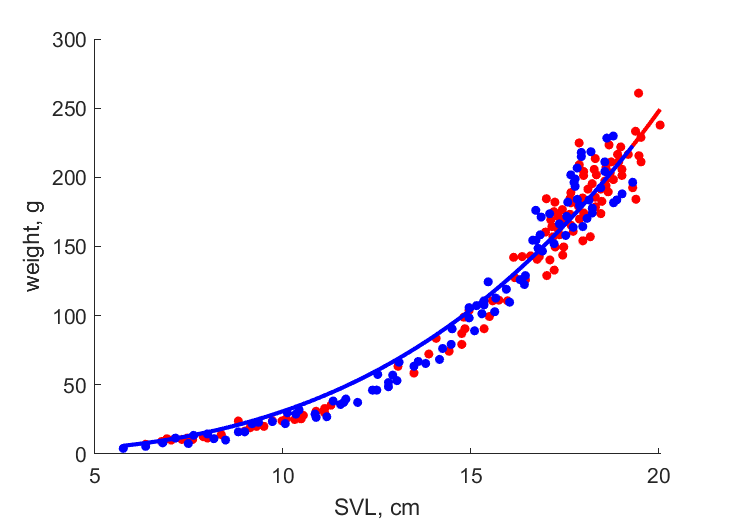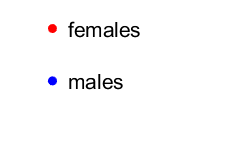Predictions & Data for this entry
| Model: std | climate: Cwa, Cwb | migrate: | phylum: |
| COMPLETE = 2.5 | ecozone: TPa | food: biCi | class: |
| MRE = 0.034 | habitat: 0iTi, 0iTa, 0iTd | gender: Dg | order: |
| SMSE = 0.003 | embryo: Tv | reprod: O | family: |
Zero-variate data
| Data | Observed | Predicted | (RE) | Unit | Description | Reference |
|---|---|---|---|---|---|---|
| ab | 145 | 144.8 | (0.001308) | d | age at birth | Wyk1992 |
| tp | 1900 | 1894 | (0.003121) | d | time since birth at puberty | Wyk1992 |
| am | 9088 | 9086 | (0.0003178) | d | life span | AnAge |
| Lb | 6.5 | 6.154 | (0.05329) | cm | SVL at birth | Wyk1992 |
| Lp | 17.1 | 17.07 | (0.001723) | cm | SVL at puberty for females | Wyk1992 |
| Lpm | 16.6 | 16.37 | (0.01406) | cm | SVL at puberty for males | Wyk1992 |
| Li | 20 | 20.47 | (0.02329) | cm | ultimate SVL for females | Wyk1992 |
| Lim | 19.2 | 19.23 | (0.001483) | cm | ultimate SVL for males | Wyk1992 |
| Wwb | 7 | 7.332 | (0.04738) | g | wet weight at birth | Wyk1992 |
| Wwp | 160 | 156.5 | (0.02178) | g | wet weight at puberty for females | Wyk1992 |
| Wwpm | 133 | 133.7 | (0.004957) | g | wet weight at puberty for males | Wyk1992 |
| Wwi | 251 | 269.7 | (0.07457) | g | ultimate wet weight for females | Wyk1992 |
| Wwim | 217 | 216.8 | (0.001147) | g | ultimate wet weight for males | Wyk1992 |
| Ri | 0.003425 | 0.003429 | (0.001181) | #/d | maximum reprod rate | Wyk1992 |
Uni- and bivariate data
| Data | Figure | Independent variable | Dependent variable | (RE) | Reference |
|---|---|---|---|---|---|
| LW_f |   | SVL | weight | (0.08127) | Wyk1992 |
| LW_m |   | SVL | weight | (0.1091) | Wyk1992 |
| tL |  | time since birth | SVL | (0.04799) | Wyk1992 |
Pseudo-data at Tref = 20°C
| Data | Generalised animal | Smaug giganteus | Unit | Description |
|---|---|---|---|---|
| v | 0.02 | 0.02515 | cm/d | energy conductance |
| kap | 0.8 | 0.918 | - | allocation fraction to soma |
| kap_R | 0.95 | 0.95 | - | reproduction efficiency |
| p_M | 18 | 33.06 | J/d.cm^3 | vol-spec som maint |
| k_J | 0.002 | 0.001 | 1/d | maturity maint rate coefficient |
| kap_G | 0.8 | 0.802 | - | growth efficiency |
Discussion
- Temperatures are guessed
- Males are assumed to differ from females by {p_Am} and E_Hp only
- scaled functional response seems to increase slightly with age
Facts
- Called sungazer because of its distinctive thermoregulatory behaviour of elevating the anterior parts of the body by extending its fore limbs, usually near the entrance of its burrow as if looking at the sun (Ref: Wiki)
Bibliography